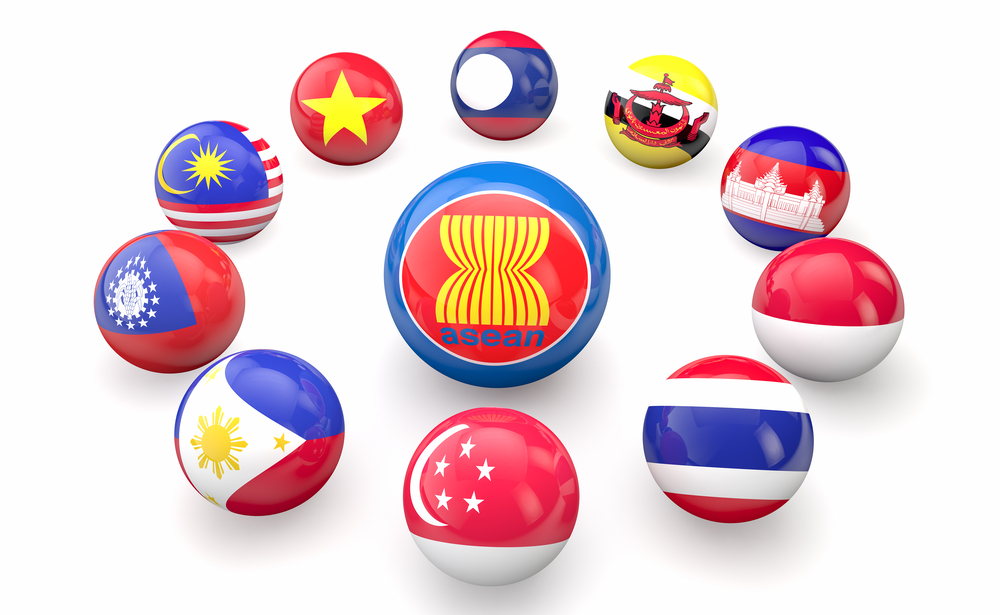Hopes Remain High for the AEC

Please note that we are not authorised to provide any investment advice. The content on this page is for information purposes only.
This year has been one of high expectations and of disappointment in Southeast Asia. Rarely has the economic and strategic importance of the region been as apparent. As China’s economy is transitioning towards ‘a new normal’ marked by lower growth, investors have looked to ASEAN as both an alternative and a complementary market to China.
This year has been one of high expectations and of disappointment in Southeast Asia. Rarely has the economic and strategic importance of the region been as apparent. As China’s economy is transitioning towards ‘a new normal’ marked by lower growth, investors have looked to ASEAN as both an alternative and a complementary market to China.
Hopes have centred on the ASEAN Economic Community (AEC), of which inauguration comes in late 2015. The bold language of ‘a single market and production base’ and of the launch of an economic community implies a change in the way of doing business in Southeast Asia. The reality is slow and incremental progress.
There is already a free trade regime for most goods. Progress has been slower on the more difficult issues of non-trade barriers, trade in services, financial services integration, customs harmonisation and the movement of labour. The AEC will not be raising the curtain on any radical change.
On the strategic front, growing US–China rivalry over Southeast Asia seems to have exceeded ASEAN’s ability to come up with a unified response. ASEAN ministers were unable to conclude with their customary joint declaration after their meeting in Kuala Lumpur earlier in November. ASEAN’s powerlessness before regional ‘non-traditional security threats’, such as the haze issue, is a stark reminder of ASEAN’s lack of institutional capability and its inability to transcend nationalist sentiment.
Regional political integration needs national governments regarded by their own people as representative and legitimate. While representative democracy and the rule of law have leapt forward in Myanmar and been confirmed emphatically in Indonesia, Thailand remains under military rule and Malaysia (the 2015 chair of ASEAN) is in deep political crisis.
Despite ASEAN’s continuing weaknesses, it is more relevant than ever. ASEAN remains the platform for a range of diplomatic and economic activities that are critical to the future of Asia at a time when long-term developments in the region challenge international order. ASEAN’s central role in regional multilateralism makes it uniquely placed to help shape events.
The question is not how to preserve a status quo that is already over but how the global order is changing and how to implement the direction of that change. ASEAN’s sparse achievements in integration belie its value. China’s One Belt One Road (OBOR) initiative is a generational project integral to its economic transition and its ‘peaceful rise’. It envisions a set of corridors of economic integration, opened up by a network of overland and maritime connectivity. It means building new networks of global partnership and forging new paths for bilateral and multilateral cooperation with more than 60 other countries. It means a new economic geography for Asia.
Southeast Asia needs the investments planned under OBOR, but the multilateral partnerships necessary to make such investments work are going to be hard to put together. ASEAN would have a lot to offer from its experiences as a multilateral forum. China should look to ASEAN as a partner for OBOR.
China’s rise is re-ordering strategic relations and reshaping relationships in trade, investment and culture. While these developments are rich with promise, they are come with anxiety, particularly from the United States, Japan and India. Through multilateral efforts that draw in all these players, ASEAN has stood for mutually beneficial collaboration rather than destructive rivalry, engagement rather than containment.
Southeast Asia has long served as an arena of great power relations and rivalry. In the last four decades, ASEAN has served as a platform for confidence building and collaboration through institutions, such as the ASEAN Regional Forum and the East Asia Summit. Even with all its internal weaknesses, ASEAN remains central to a set of regional discussions as well as formal and informal links that tie the interests of the US, China and Japan together.
ASEAN’s experience and credibility as the hub of multilateralism is important in helping the wider region adapt to the economic and strategic rise of China. That rise is provoking a reaction from conservative elements in the United States and Japan. The US ‘pivot to Asia’ as well as a similar heightening and securitisation of Japan’s engagement with Southeast Asian countries are, at least in part driven by concerns over an emerging China.
These concerns are understandable as the very ground of global order is shifting. Efforts to cope amid this uncertainty and dynamism must leave room for experiment, evolution and tolerance for ambiguity. ASEAN must be a partner for the interested parties to come together to bring about a new regional order that can accommodate the dynamism of the peoples of Asia.
This makes ASEAN a vital platform, and beyond that, a key partner for China to develop, convey and exemplify its peaceful rise. ASEAN’s fluidity and its lack of institutional strength may not always be a handicap in a global context of massive change and strategic anxiety.
ASEAN is no threat to any major power. It has never been ‘a global player’ in its own right. Through its diplomacy and consensus building over 48 years, it has managed to become a useful forum and partner for global players working out new arrangements of co-existence. The promise of ASEAN should not be undervalued.
ASEAN still matters for global change is republished with permission from East Asia Forum




